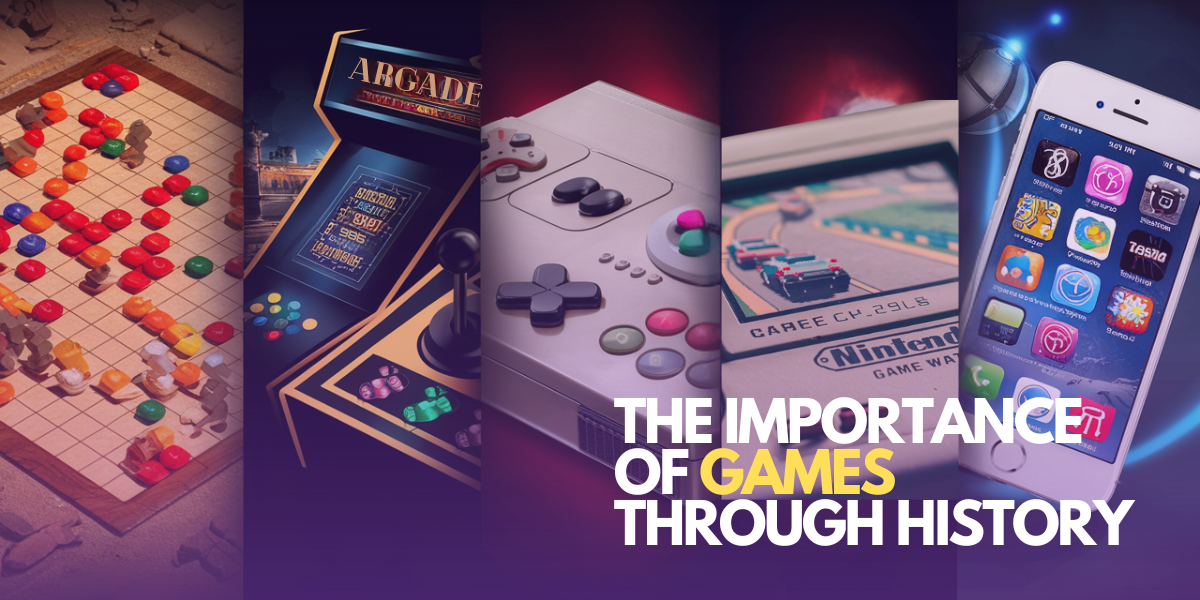Embarking on a Journey: My Love Affair with Video Games
My journey with video games began at a young age; it all started with playing Pong with my family. The joy of competing with my father and siblings created unforgettable memories that would later prove to be the foundation for my lifelong love affair with video games.
As I grew older, my gaming experiences expanded. I delved into the world of Atari games, spending hours with my brother and cousins, exploring virtual worlds, and conquering pixelated challenges. The Atari console became a centerpiece of our gatherings, fostering a sense of connection and shared excitement.
Soon, handheld devices like the Game & Watch became the next frontier of my gaming journey. These portable devices allowed me to take gaming wherever I went, immersing myself in games during long car rides or boring waiting times. The Game & Watch opened up a new dimension of gaming, making it a personal and intimate experience.
As technology advanced, I found myself exploring the realms of Amstrad CPC and PC games. These platforms provided various gaming possibilities, from strategy games like Red Alert or Civilization to immersive experiences like Doom. My siblings and I would compete in the Winter Games on the Amstrad, honing our skills and pushing each other to new heights.
Mobile phones, notably the iconic Nokia with its addictive game “Snake,” marked a significant shift in my gaming journey. Although I didn’t own a phone then, I would borrow my father’s or rely on friends to experience the thrill of gaming on the go. This period during my university days showcased the enduring passion and the sense of camaraderie that video games have brought into my life.
Growing up, video games were not just a solitary pursuit for me and my siblings. While we enjoyed our fair share of indoor gaming sessions, we also embraced outdoor activities like playing basketball and football in our neighborhood. Video games became a bridge that connected our love for technology and our passion for physical play, creating a balanced and fulfilling childhood.
Our fascination with video games extended beyond mere play. We were curious about how games worked and how we could modify them. This curiosity led us to learn programming, allowing us to tinker with game scores and explore the inner workings of our favorite games. We experimented with digital pens for pixel art and delved into the world of programming languages like Logo and BASIC. Our love for video games ignited our passion for technology. It fueled our desire to understand the mechanics behind the games we loved.
Gaming magazines and game demos became our windows into the vast universe of electronic games. We devoured the latest issues, eagerly absorbing reviews, tips, and tricks. The CDs filled with game demos expanded our knowledge and introduced us to new genres and experiences. Video games became a source of entertainment and a gateway to the world of gadgets and technologies that fascinated me.
My journey with video games has been one of discovery, connection, and personal growth. It has shaped my love for technology, fueled my curiosity, and brought me closer to my family and friends. From the early days of Pong to the ever-evolving landscape of modern gaming, video games have been a constant companion, offering excitement, challenge, and a sense of belonging. They have enriched my life and continue inspiring me to explore new horizons within the gaming world and beyond.
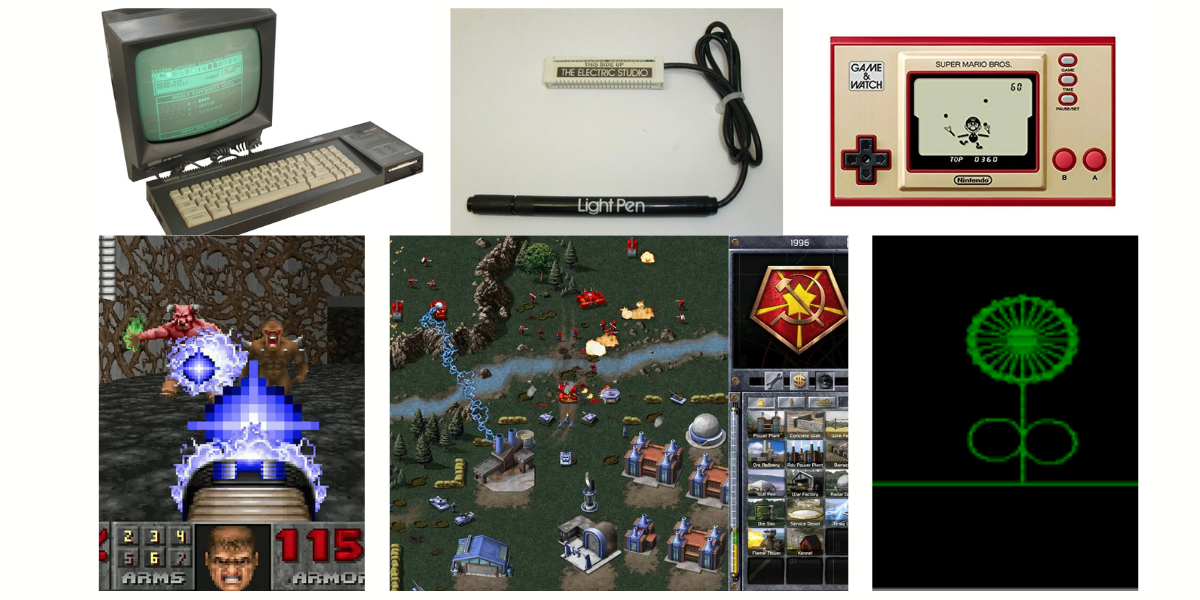
A Passion Ignited: Unveiling the Power of Game History
My journey in video games has been a deeply immersive and transformative experience. From founding the first mobile studio in the MENA region to organizing capacity-building programs like The App Challenge and NEOM Game Dev Challenge, as well as my role as a lecturer in creative game design at Hussein Technical University (HTU) and managing the vibrant community at the Jordan Gaming Lab, my involvement has illuminated the profound importance of understanding the history of humanity games.
As I delved into the rich tapestry of game history, I discovered that it is not merely a chronicle of past successes and failures but a treasure trove of invaluable insights. It is a journey that unveils the foundations, innovations, and cultural influences shaping the medium we cherish today. By sharing this knowledge, I have witnessed firsthand how it empowers individuals to embark on their creative journeys, igniting their passion and enabling them to contribute to the ever-evolving gaming landscape.
Exploring the annals of game history is like peering through a window into humanity’s collective imagination. It reveals the pioneers who blazed trails, the groundbreaking innovations that pushed the boundaries of what was possible, and the cultural influences shaping games into a powerful form of expression. This knowledge is a wellspring of inspiration, sparking creative ideas and fostering a deep appreciation for the artistry and craftsmanship that goes into crafting memorable gaming experiences.
Moreover, understanding game history provides a compass for aspiring game developers, guiding them toward new horizons. Building upon the foundations laid by those who came before, they can create games that resonate with audiences profoundly. Armed with the knowledge of past successes and failures, they can confidently navigate the ever-changing gaming landscape, making informed decisions that create meaningful and impactful games.
Ultimately, my mission is to share the knowledge gleaned from game history, to inspire and empower individuals to embrace their creativity, and to contribute to the vibrant tapestry of gaming. By understanding where we come from, we can better shape the future of gaming, celebrating its diversity, pushing its boundaries, and creating experiences that captivate and resonate with players worldwide. We can forge a future where games entertain, enlighten, enrich, and inspire.
The Importance of Games Through History
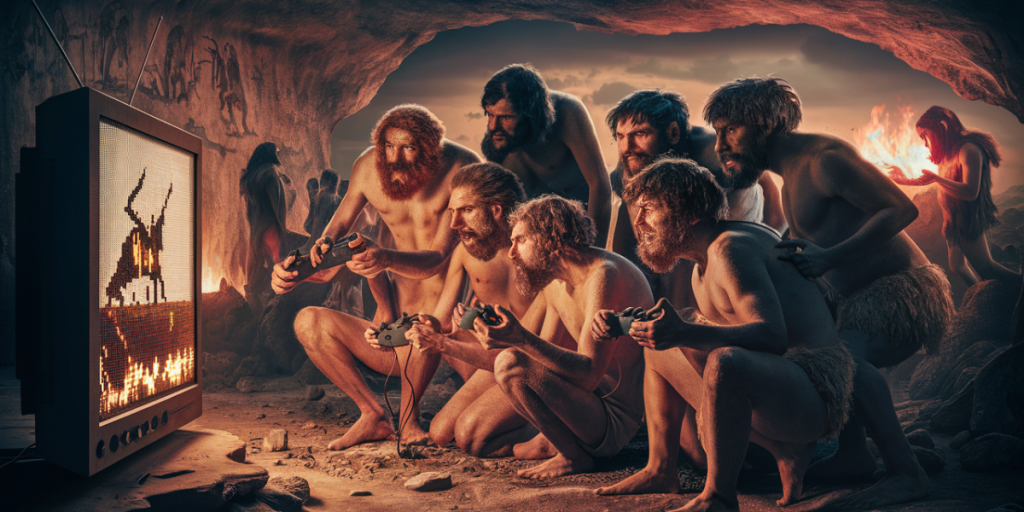
The Role of Games in Human Life Games has been a part of human life for a long time, from simple board games in ancient times to today’s global digital games. They are more than just entertainment; they help develop our thinking, social skills, and culture.
In the past, games were important for strategic thinking and problem-solving, with early humans using them to improve their skills. Games also united people, creating a sense of community and shared experiences.
Games still play these essential roles today, providing fun, connection, and competition. They allow people to bond, compete, and enjoy achievements together.
Overall, games significantly impact our minds, relationships, and societies. They represent our desire for challenges, growth, and connection and reflect the human experience.
Delving into the Role of Games in Ancient Civilizations: The Royal Game of Ur
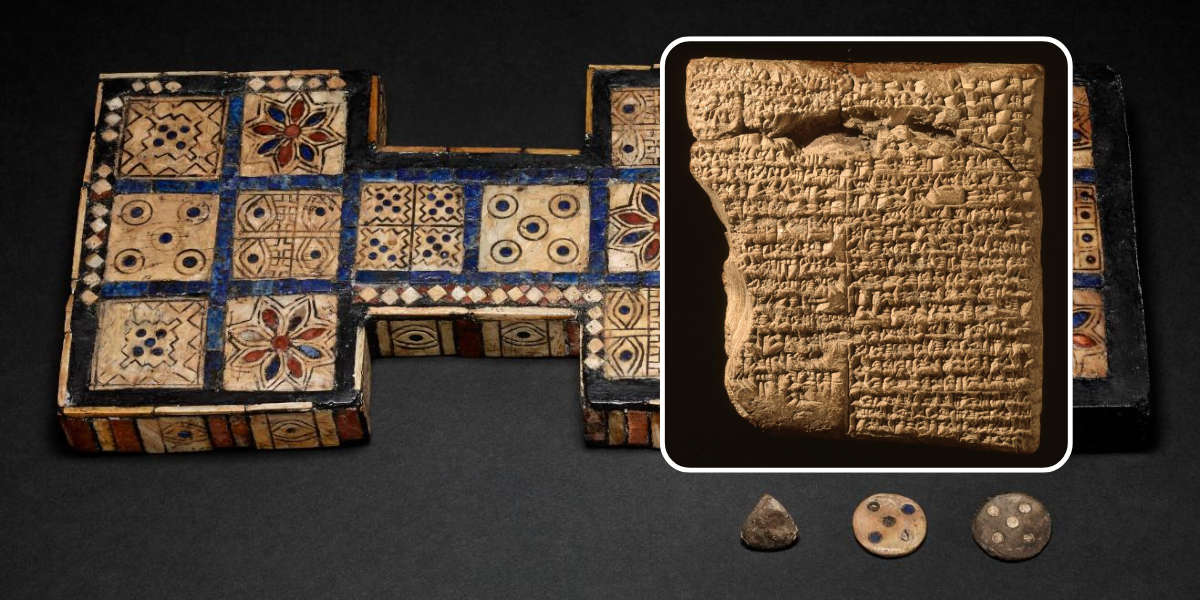
One of the most fascinating aspects of ancient civilizations is their affinity for games, and one such testament to this is the Royal Game of Ur. This game, believed to have originated in ancient Mesopotamia around the 3rd millennium BC, is one of the earliest known board games in human history. Its discovery in royal tombs indicates its widespread popularity, transcending the boundaries of social classes.
The game’s board, beautifully crafted from wood, shell, and lapis lazuli, is a testament to the era’s craftsmanship. Once filled with pieces moved according to the dice roll, the squares on the board were arenas of strategic warfare. The players, whether royalty or commoners, were engaged in a battle of wits, their minds locked in a dance of strategy and chance.
Although the game’s original rules were lost in the sands of time, the discovery of a “Rules Tablet” has shed light on its intricacies. The tablet, inscribed with a cuneiform script, outlines the rules and gameplay, revealing a profoundly strategic game that was engaging and fun. It paints a picture of ancient Mesopotamians huddled around the game board, their faces lit by the flickering light of oil lamps, engrossed in the game, their laughter and chatter filling the air.
The Royal Game of Ur was not just a game but a social event, a means of connection, and a testament to human love for challenge and competition. It serves as a reminder of how games have been an integral part of human culture, a thread that weaves through the tapestry of our history, from ancient civilizations to the digital age.
The Dawn of Home Video Gaming: The Magnavox
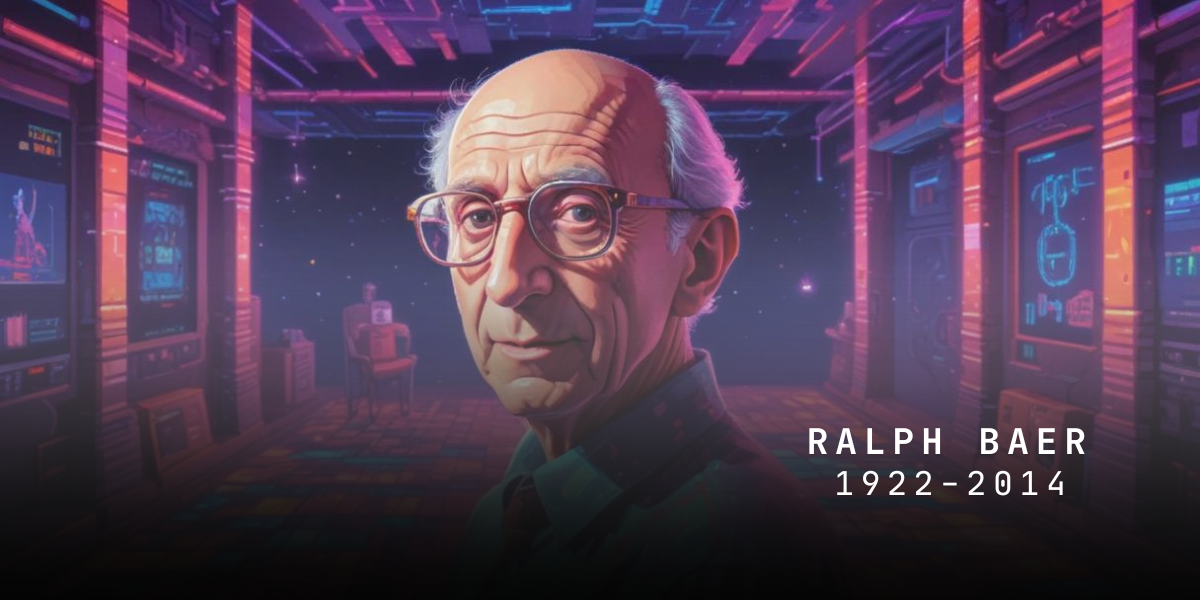
The year 1972 marked a significant shift in the entertainment landscape with the introduction of the Magnavox Odyssey, the first home video gaming system. This revolutionary device, Ralph Baer’s brainchild, began a new era, forever changing how we perceive and interact with technology.
Ralph Baer, often hailed as the ‘Father of Video Games,’ was a visionary who saw beyond the conventional use of television. During his college years, he was captivated by the potential of television technology, not just as a one-way communication tool for broadcasting but as an interactive medium. He envisioned a world where televisions were passive receivers and active participants in our lives.
Between 1966 and 1968, Baer’s vision took the form of a series of prototypes. The culmination of his efforts was the “Brown Box,” a rudimentary yet innovative device that allowed users to interact with their television sets in a way never before possible. This “Brown Box” was the blueprint for all home video game systems that would follow, laying the groundwork for the multi-billion-dollar video game industry we know today.
But Baer’s contribution went beyond just creating a new form of entertainment. He transformed our relationship with technology, turning it from a one-sided interaction into a dialogue. His vision of interactive entertainment made technology an active participant in our lives, a companion that could challenge, engage, and even teach us. This shift in perspective opened up a world of possibilities, from educational games that make learning fun to virtual reality experiences that transport us to different worlds.
Today, as we stand on the cusp of an era where technology is more intertwined with our lives than ever, we owe a debt of gratitude to pioneers like Ralph Baer. His vision of interactive entertainment has transformed the entertainment industry and reshaped our understanding of what technology can be and how it can enrich our lives.
Gaming Industry Resilience and Innovation: Rising from the Ashes

The early 1980s witnessed a significant setback for the video game industry. This crash threatened to obliterate the burgeoning world of digital entertainment. But like a phoenix rising from the ashes, the sector rebounded, emerging more robust and more innovative than before. This resilience and innovation have become defining characteristics of the gaming industry, driving it to new heights and cementing its place in our cultural landscape.
One key factor in the industry’s recovery was improved quality control. The crash of the early 1980s was primarily due to an oversaturation of low-quality games. Recognizing this, the industry implemented stricter quality control measures, ensuring that only the best games made it to the market. This focus on quality over quantity helped restore consumer confidence and set the stage for a new era of gaming.
Consoles like the Nintendo Entertainment System (NES) and the Sega Genesis were at the forefront of this resurgence. They introduced 16-bit graphics, offering a level of visual detail and complexity that was unprecedented at the time. These consoles brought a new level of realism to gaming, making the virtual worlds more immersive and engaging.
However, the innovation continued beyond consoles. Handheld devices like the Game Boy took the gaming experience out of the living room and into the world, making gaming a portable, personal experience. This shift towards portable gaming not only made games more accessible but also changed our relationship with them, turning them into a constant companion rather than a home-bound pastime.
Alongside these technological advancements, the industry also saw the emergence of iconic franchises. Games like Super Mario Bros., The Legend of Zelda, and Sonic the Hedgehog became cultural phenomena, transcending the boundaries of gaming to become a part of our collective cultural identity. These franchises drove further advancements in the industry, pushing the boundaries of graphics, online play, and immersive experiences.
The resilience and innovation shown by the gaming industry in the wake of the early 1980s crash are a testament to the power of creativity and perseverance. They serve as a reminder that setbacks are not the end but opportunities for growth and innovation. And it’s this spirit of resilience and innovation continues to drive the gaming industry forward, making it one of the most dynamic and exciting industries in the world today.
The Rise of Mobile Gaming: From Simple Beginnings to Global Phenomenon
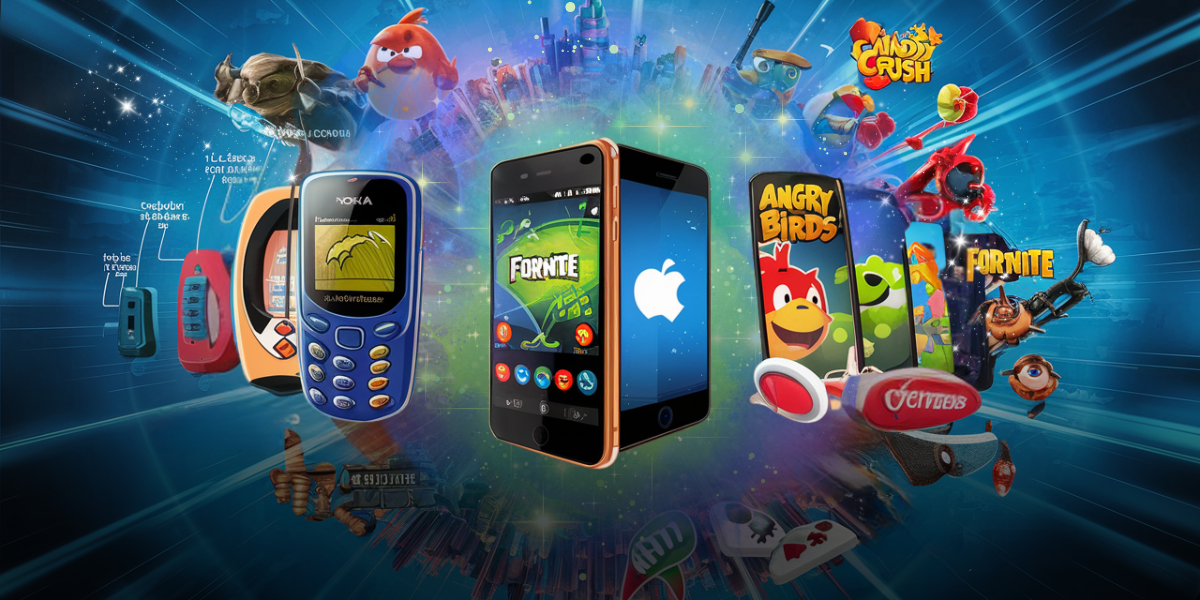
The late 1990s and early 2000s marked the birth of a new era in gaming – the rise of mobile gaming. What started as simple games on feature phones has now evolved into a global phenomenon, with complex and immersive titles available on smartphones. This evolution has been fueled by the introduction of app stores, transforming mobile gaming into the largest revenue generator in the industry.
Mobile gaming’s humble beginnings can be traced back to the early days of feature phones. With their limited capabilities, these devices offered basic games that provided moments of entertainment on the go. One iconic example is the game “Snake,” which first appeared on Nokia phones. This simple yet addictive game captivated players worldwide and became synonymous with the early days of mobile gaming. Even today, “Snake” holds a special place in the hearts of many, evoking nostalgia and fond memories of a simpler time.
However, it was the advent of smartphones that truly revolutionized mobile gaming. With the introduction of powerful devices and advanced touchscreens, game developers were able to create more complex and visually stunning games. The rise of app stores, such as Apple’s App Store and Google Play, provided a platform for developers to distribute their games to a global audience. This accessibility and ease of downloading games directly onto smartphones opened up a new world of gaming possibilities.
Mobile gaming has become a dominant force in the gaming industry, generating billions of dollars in revenue. It has captured the attention of casual gamers and attracted a dedicated community of competitive players. From puzzle games and arcade classics to immersive role-playing adventures and multiplayer battles, mobile gaming offers diverse experiences to suit every taste.
Mobile gaming has transformed the gaming industry and changed how we perceive and engage with games. It has made gaming more accessible and portable, allowing us to carry our favorite games wherever we go. Mobile gaming has become integral to our daily lives, providing entertainment, relaxation, and a sense of connection with a global community of players.
As technology advances, we expect mobile gaming to evolve further, pushing the boundaries of what is possible and captivating players with new and innovative experiences. The rise of mobile gaming is a testament to the power of technology to transform our lives and create new avenues for entertainment and connection.
The Evolution of Video Games in the Middle East: A Tale of Adaptation and Innovation
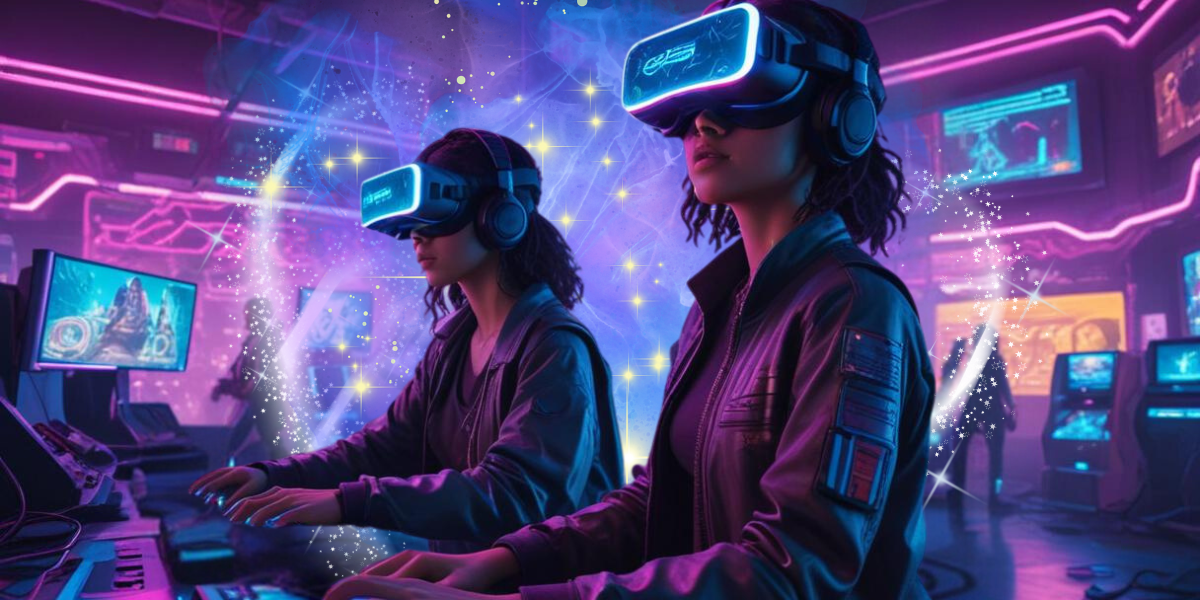
The history of video games in the Middle East is a captivating narrative that showcases the region’s ability to adapt to new technologies and embrace the gaming world. While the early days are shrouded in mystery, arcade games are believed to have found a foothold in the Middle East alongside imported consoles like the Nintendo Entertainment System (NES). With their captivating visuals and immersive experiences, these gaming machines captured the imagination of the region’s gamers.
But in the 1980s, the Sakhr AX-170 was the game console that popularized gaming in the Middle East.
The Sakhr AX-170 wasn’t just a computer but a pioneer in introducing video games to the Arabic world in the 1980s. Unlike its global counterparts, the AX-170 sported an Arabic keyboard, a crucial feature for navigating games and software. This localization and potential affordability due to regional production made the AX-170 a gateway for many Arabic speakers to experience home gaming. The MSX platform boasted a vast library of titles, offering the AX-170 owner a diverse range of games. While the AX-170 was a key player, it wasn’t alone. Arcades likely existed alongside consoles, providing a social aspect to gaming. Overall, the Sakhr AX-170 stands as a testament to how companies like Sakhr catered to the region’s needs, making video games more accessible and culturally relevant, laying the groundwork for the thriving gaming scene in the Middle East today.
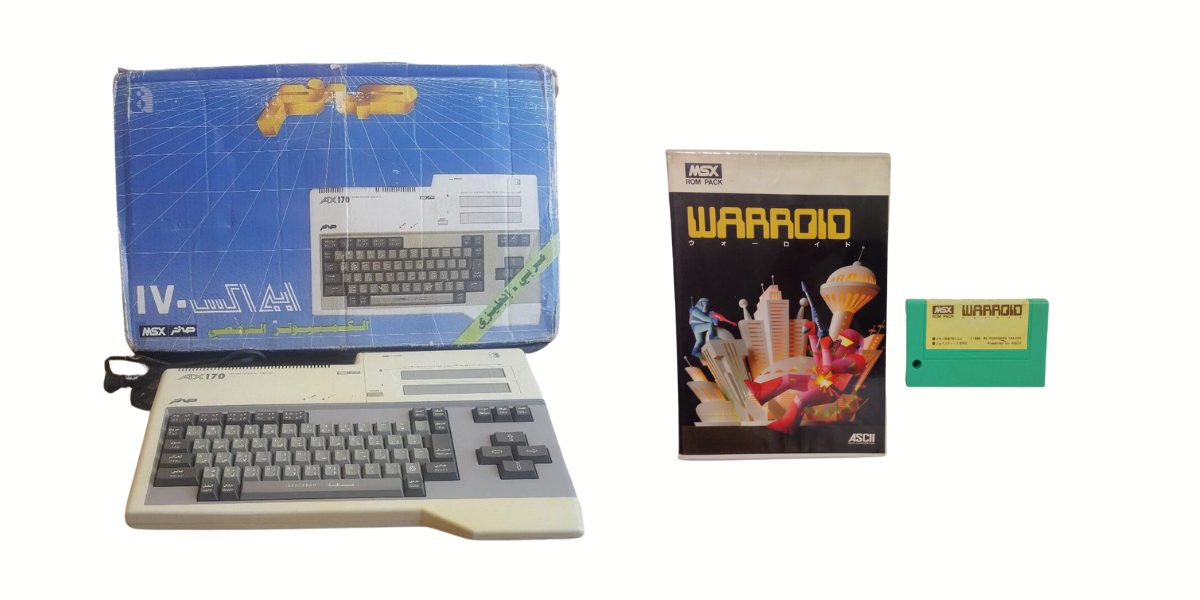
In the 1990s, a new era of gaming emerged with the rise of social gaming hubs. These cafes became popular gathering places where friends would join to play games on PCs or consoles. These hubs provided a social environment where gamers could connect, compete, and share their passion for gaming. They became vibrant spaces where friendships were forged, and gaming skills were honed.
However, the true boom in gaming came with the advent of the mobile revolution. As smartphones became more affordable and accessible, gaming on the go became a reality for millions in the Middle East. Mobile gaming opened up a world of possibilities, allowing gamers to carry their favorite games wherever they went. This accessibility and convenience propelled the popularity of gaming to new heights in the region.
Today, the Middle East boasts a thriving gaming industry, with local studios at the forefront of crafting games infused with regional flair. These studios recognize the importance of incorporating Middle Eastern culture, traditions, and values into their games, creating experiences that resonate with the local audience. This infusion of regional flair adds a unique touch to the games. It helps foster a sense of cultural identity among Middle Eastern gamers.
Esports, the competitive gaming side, is also gaining traction in the Middle East. Tournaments and events featuring skilled players from the region draw enthusiastic audiences and showcase Middle Eastern gamers’ talent and passion. Esports has become a platform for players to compete globally, further solidifying the Middle East’s presence in the international gaming community.
Jordan appears to be actively developing its Esports scene, in 2024 the Jordan Gaming Summit which is annual eGaming event held in Jordan since 2011 launched the first ESports Future Summit having more sessions, workshops, Esports tournament and community engagment from North to South of Jordan with more than 2000 Participants.
While the Middle East’s gaming industry continues to flourish, it does face its share of challenges. Content restrictions and cultural sensitivities require game developers to navigate carefully, ensuring compliance while delivering engaging experiences. Additionally, the region’s infrastructure, including access to high-speed internet, can be uneven, posing hurdles for online gaming communities.
However, companies like Sakhr Computers are leading the way in addressing these challenges and creating a more accessible and culturally relevant gaming experience for Middle Eastern gamers. They are pioneers in shaping an inclusive, diverse gaming landscape that reflects the region’s unique identity.
The Middle East’s gaming story reflects a growing passion for play, a knack for adapting to trends, and a promising future in the ever-evolving world of video games. As the industry continues to evolve, the Middle East’s gaming community will undoubtedly leave its mark on the global gaming landscape, showcasing the region’s creativity, resilience, and unwavering love for the world of gaming
